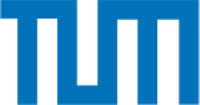The transparent soccer player

Goals in soccer only provide limited information about a team’s performance and the quality of its players: Goals are scored only rarely in soccer, and can come about through an individual moment of loss of concentration, while a very dominant team might simply be unlucky sometimes.
Traditional indicators such as shots on goal, number of completed passes, tackle rates, team ball possession, and distances covered are widely used, especially in the media, but their significance for performance is doubtful. In the 2014 World Cup semi-final, for example, Germany had fewer shots on goal than Brazil (14-18), but hardly any observer would doubt Germany’s superiority in that match (7-1 goals).
The book “Data Analytics in Professional Soccer” by Dr. Daniel Link posits situations that present the danger of a goal being scored as central criteria for “performance” in soccer. “In soccer, the most important thing is for a team to get the ball into the dangerous area around the goal and to prevent the opposing team from doing the same,” said the scientist from the Chair of Performance Analysis and Sports Informatics at TUM. In his recently published work, he presents six individual studies with innovative mathematical approaches to match analysis and player evaluation in professional soccer.
Real-time analysis using optical tracking
In Chapter 3, originally published in “PLOS One”, the sports scientist presents objective criteria for determining team performance in real time using a specially developed algorithm. He uses this procedure to determine a quantitative representation of the probability of a goal being scored for each point in time at which a player is in possession of the ball — “I call this Dangerousity,” said Link. The calculation of this metric is based on the spatial constellation of the player and the ball and comprises four components: Zone, Control, Pressure, and Density. The term “Dangerousity” has since been widely adopted by the global sports data community.
The author has used this approach by evaluating 64 Bundesliga matches in cooperation with the German Soccer League (DFL). An optical tracking system was used to acquire the positional data of the players and the ball. In addition, the evaluation by Link’s algorithm was compared with assessments of semi-professional soccer coaches in 100 match scenarios and showed a high agreement between the computer and the humans. The analysis was supported by the DFL subsidiary Sportec Solutions (STS).
“Dangerousity can be used to derive further metrics that can help answer questions regarding the analysis of the match,” said the sports scientist when explaining his new approach. “We use these metrics to analyze individual actions in a match, to describe passages of play, and to characterize the performance and efficiency of teams over the course of a season.”
For future studies, they provide a criterion that does not depend on chance or results to investigate the influence of central events in a soccer match, various playing systems, or tactical group concepts on success.
Publication:
Daniel Link: Data Analytics in Professional Soccer – Performance Analysis Based on Spatiotemporal Tracking Data, Springer Vieweg 2018. ISBN 978-3-658-21177-6
Contact:
PD Dr. Daniel Link
Technical University of Munich
Chair for Training Science and Computer Science in Sports
Phone: 0049/89/289 24498
daniel.link@tum.de
https://www.tum.de/nc/en/about-tum/news/press-releases/detail/article/34675/
Media Contact
All latest news from the category: Social Sciences
This area deals with the latest developments in the field of empirical and theoretical research as it relates to the structure and function of institutes and systems, their social interdependence and how such systems interact with individual behavior processes.
innovations-report offers informative reports and articles related to the social sciences field including demographic developments, family and career issues, geriatric research, conflict research, generational studies and criminology research.
Newest articles

Silicon Carbide Innovation Alliance to drive industrial-scale semiconductor work
Known for its ability to withstand extreme environments and high voltages, silicon carbide (SiC) is a semiconducting material made up of silicon and carbon atoms arranged into crystals that is…

New SPECT/CT technique shows impressive biomarker identification
…offers increased access for prostate cancer patients. A novel SPECT/CT acquisition method can accurately detect radiopharmaceutical biodistribution in a convenient manner for prostate cancer patients, opening the door for more…

How 3D printers can give robots a soft touch
Soft skin coverings and touch sensors have emerged as a promising feature for robots that are both safer and more intuitive for human interaction, but they are expensive and difficult…





















